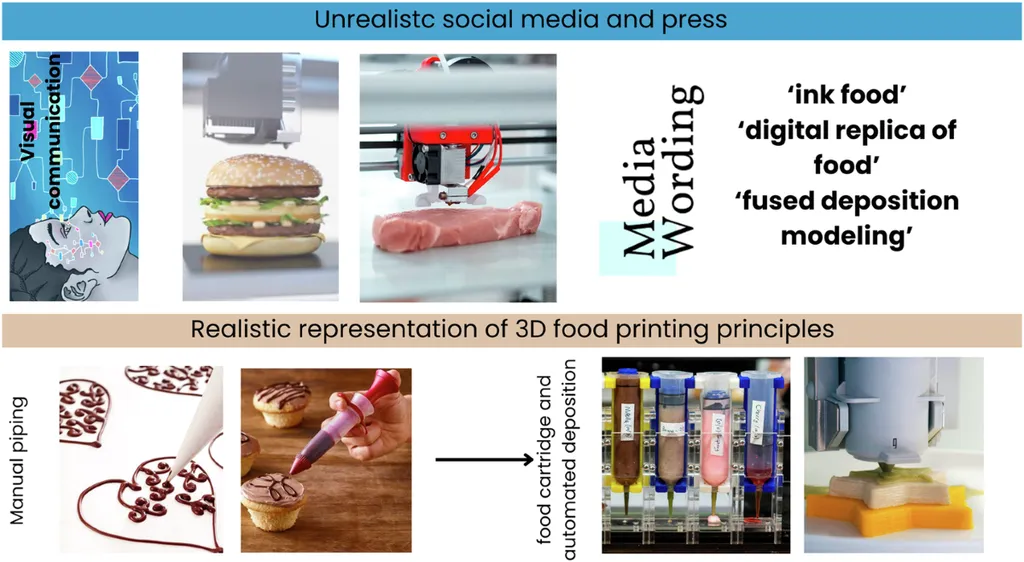In the rapidly evolving world of food technology, a groundbreaking study published in *Shipin Kexue* (which translates to *Food Science*) is set to revolutionize the way we think about 3D food printing. Led by LI Ximing and a team of researchers from the Key Laboratory of Low Carbon Cold Chain for Agricultural Products at Tianjin University of Commerce, this research delves into the intricate world of material characterization and process parameter optimization, offering a glimpse into the future of personalized nutrition and food manufacturing.
The study addresses two critical bottlenecks in 3D food printing: the scarcity of suitable food materials and the poor formability of printed products. “Developing a suitable food formulation for 3D printing and optimizing the printing process are key to breaking through these limitations,” explains LI Ximing. The team’s work focuses on understanding how the rheology and thermal properties of food materials influence the 3D printing effect, providing a theoretical basis for the development and optimization of 3D printed food products.
One of the most compelling aspects of this research is its potential to develop easy-to-swallow foods, a significant advancement for those with dysphagia or swallowing difficulties. The quality of these foods is heavily influenced by the materials used in 3D printing and the post-processing techniques employed. “Little research has been conducted on this,” notes LI Ximing, highlighting the novelty and importance of their work.
The study also explores the influence of process parameters on the printing effect, offering insights into how different post-treatment processes can enhance the quality of 3D printed foods. This research is not just about improving the form and nutrient content of food products; it’s about redefining the possibilities of food manufacturing.
The commercial implications of this research are vast. As the demand for personalized nutrition and sustainable food production grows, 3D food printing could become a game-changer. The ability to customize food products in terms of form and nutrient content opens up new avenues for the food industry, from personalized diets to innovative food designs.
Moreover, the development of easy-to-swallow foods could have a profound impact on the healthcare sector, providing a solution for those with swallowing difficulties and improving their quality of life. The potential for 3D food printing in the healthcare industry is immense, and this research is a significant step towards unlocking that potential.
In conclusion, the research led by LI Ximing and his team at Tianjin University of Commerce is a testament to the power of innovation in food technology. By addressing the bottlenecks in 3D food printing and exploring the potential of this technology in developing easy-to-swallow foods, they are paving the way for a future where food is not just nourishing but also personalized and accessible. As the world continues to grapple with food security and sustainability challenges, this research offers a glimpse into a future where technology and innovation can provide solutions.

